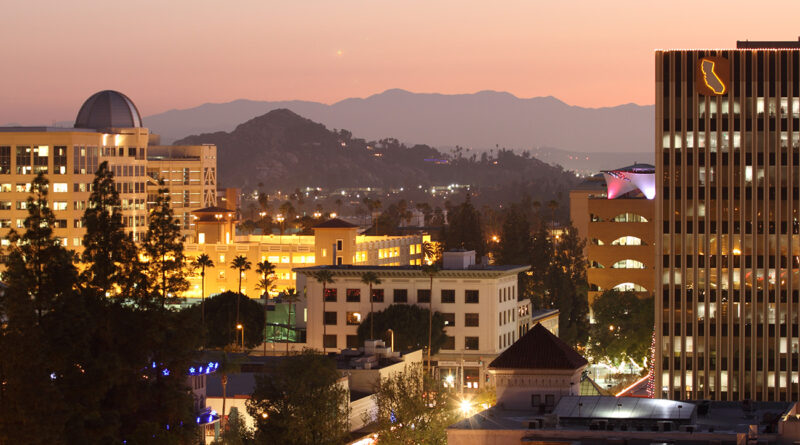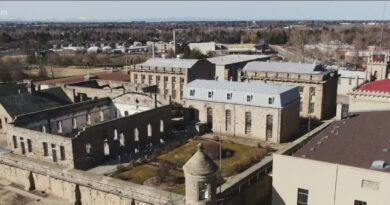History of Riverside California
Riverside, California, is a city with a rich history that dates back to the late 19th century. Located in the Inland Empire, Riverside has evolved from a small agricultural community into a thriving urban center known for its cultural landmarks, educational institutions, and economic diversity. The city’s growth has been shaped by its strategic location, its role in the development of the citrus industry, and its commitment to preserving its historical heritage.
In this article, we’ll explore the fascinating history of Riverside, from its early beginnings to its emergence as one of Southern California’s most dynamic cities.
The Founding of Riverside
Riverside was founded in 1870 by John W. North, a visionary leader and social reformer from the Midwest who sought to establish a community based on progressive values. North, along with a group of like-minded settlers, chose the location for its fertile land and abundant water supply, both of which were ideal for agriculture. The Riverside colony was initially designed as a temperance community, emphasizing education, culture, and moral values.
The city’s founding coincided with the construction of the California Southern Railroad, which linked Riverside to Los Angeles and the rest of the country. This connection facilitated the transportation of goods and people, contributing to the city’s early growth and development.
The Role of the Citrus Industry
Riverside’s history is closely tied to the development of the citrus industry, which played a pivotal role in the city’s growth and prosperity. In 1873, Eliza Tibbets, one of Riverside’s early settlers, planted two navel orange trees that had been sent to her from Bahia, Brazil. These trees thrived in Riverside’s climate and soil, producing sweet, seedless oranges that quickly became popular.
The success of the navel orange led to the rapid expansion of citrus groves in Riverside and throughout Southern California. By the late 19th century, Riverside had become the wealthiest city per capita in the United States, thanks to the booming citrus industry. The city’s citrus growers organized cooperatives, such as the California Fruit Growers Exchange, which later became Sunkist Growers, Inc., to market and distribute their oranges nationwide.
The introduction of refrigerated railroad cars allowed Riverside’s oranges to be shipped across the country, further fueling the city’s economic growth. The citrus industry not only shaped Riverside’s economy but also left a lasting legacy in the form of the city’s cultural and architectural heritage.
The Mission Inn: A Riverside Icon
One of Riverside’s most famous landmarks, the Mission Inn, is a testament to the city’s rich history and cultural significance. The Mission Inn began as a modest adobe boarding house in 1876, built by Christopher Columbus Miller. Over the next few decades, his son, Frank Augustus Miller, transformed the property into a sprawling, luxurious hotel inspired by the missions of California.
The Mission Inn is renowned for its unique architecture, which blends elements of Spanish, Moorish, Mission Revival, and Mediterranean styles. The hotel became a popular destination for celebrities, politicians, and dignitaries, including U.S. presidents, who have stayed at the Inn over the years.
Today, the Mission Inn is a National Historic Landmark and continues to be a symbol of Riverside’s history and cultural heritage. The hotel is also a hub for community events, including the annual Festival of Lights, which attracts visitors from across the region.
Riverside During the Early 20th Century
The early 20th century was a period of growth and modernization for Riverside. The city’s population expanded rapidly, and new infrastructure was developed to support the growing community. During this time, Riverside became known for its wide, tree-lined streets, beautifully landscaped parks, and elegant homes, many of which were built in the Mission Revival and Spanish Colonial Revival architectural styles.
Riverside also became a center for innovation in agriculture and irrigation. The establishment of the Citrus Experiment Station in 1907, which later became part of the University of California, Riverside, played a key role in advancing citrus cultivation and improving agricultural practices throughout the region.
The city’s commitment to education, culture, and civic engagement continued to be reflected in the development of institutions such as the Riverside Public Library, the Riverside Art Museum, and the Riverside Municipal Auditorium.
The Growth of Education and the University of California, Riverside
Education has always been a cornerstone of Riverside’s identity, and the city’s commitment to learning was further solidified with the establishment of the University of California, Riverside (UCR) in 1954. Originally founded as a citrus research center, UCR has grown into a major public research university with a wide range of academic programs.
The university’s presence has had a profound impact on Riverside, contributing to the city’s intellectual and cultural life, as well as its economic development. UCR is known for its strong programs in the sciences, engineering, and humanities, as well as its contributions to research in agriculture, environmental sustainability, and public policy.
The university’s diverse student body reflects Riverside’s multicultural community, and UCR has been recognized as one of the most ethnically diverse research universities in the United States.
Riverside’s Role in World War II
During World War II, Riverside played a significant role in the war effort, with March Field (now March Air Reserve Base) serving as a major training and deployment center for the U.S. Army Air Corps. Thousands of pilots and aircrew members were trained at March Field, and the base became a key strategic location for the defense of the West Coast.
The war also brought significant changes to Riverside’s economy and population. The influx of military personnel and defense workers led to a housing boom and the development of new neighborhoods. After the war, many of these workers chose to remain in Riverside, contributing to the city’s post-war growth and development.
Post-War Growth and Urban Development
The post-war period saw Riverside continue to grow and evolve as a major urban center in Southern California. The construction of new highways, such as the 91 and 215 freeways, improved access to Riverside and facilitated the city’s expansion.
During the 1950s and 1960s, Riverside experienced a suburban boom, with new residential developments, shopping centers, and industrial parks springing up across the city. The city’s population continued to grow, attracting new residents from across the country, drawn by Riverside’s affordable housing, strong job market, and high quality of life.
The city’s economy diversified during this period, with industries such as manufacturing, healthcare, education, and retail becoming increasingly important. Riverside’s downtown area also underwent significant redevelopment, with efforts to preserve historic buildings while accommodating new businesses and cultural institutions.
The Civil Rights Movement and Social Change
Like many American cities, Riverside was deeply affected by the Civil Rights Movement of the 1950s and 1960s. The city’s African American and Latino communities played a key role in the struggle for civil rights, challenging segregation and discrimination in housing, education, and employment.
Riverside’s diverse population and history of progressive activism made it a focal point for civil rights efforts in the Inland Empire. The city’s churches, community organizations, and student groups were active in organizing protests, voter registration drives, and advocacy campaigns.
In 1965, Riverside became the first city in the United States to pass an ordinance banning housing discrimination based on race, religion, or national origin. This landmark achievement was a testament to the city’s commitment to social justice and equality.
Preservation of Historic Landmarks
Throughout its history, Riverside has made a concerted effort to preserve its historic landmarks and architectural heritage. The city is home to numerous buildings and sites that are listed on the National Register of Historic Places, including the Mission Inn, the Riverside County Courthouse, and the Harada House.
Riverside’s historic downtown area, with its mix of Victorian, Mission Revival, and Art Deco architecture, has been carefully preserved and revitalized, attracting businesses, tourists, and residents alike. The city’s commitment to historic preservation is also reflected in the establishment of the Riverside Historical Society and the city’s various preservation ordinances and programs.
Riverside Today: A City of Innovation and Diversity
Today, Riverside is a dynamic and diverse city that continues to build on its rich history while embracing innovation and progress. The city is a regional hub for education, healthcare, technology, and the arts, with a thriving economy and a vibrant cultural scene.
Riverside’s population has grown to over 330,000 residents, making it one of the largest cities in California. The city’s diverse community is reflected in its wide range of cultural events, festivals, and organizations, which celebrate the many cultures and traditions that make Riverside unique.
The city’s commitment to sustainability and environmental stewardship is also evident in its efforts to promote green energy, reduce greenhouse gas emissions, and preserve open spaces. Riverside has been recognized as a leader in sustainability, with initiatives such as the Riverside Public Utilities’ Green Power Program and the city’s extensive network of parks and trails.
Notable Historical Sites in Riverside
Riverside is home to numerous historical sites that offer a glimpse into the city’s past and its role in shaping California’s history. Some of the most notable sites include:
- The Mission Inn: A National Historic Landmark and one of Riverside’s most iconic buildings, the Mission Inn is a must-see for visitors interested in architecture, history, and luxury.
- The Riverside County Courthouse: Built in 1903, this Beaux-Arts-style courthouse is a stunning example of early 20th-century architecture and remains a functioning courthouse today.
- The Harada House: A National Historic Landmark, the Harada House is a symbol of the fight against racial discrimination and an important site in the history of civil rights in the United States.
- Victoria Avenue: This scenic drive is lined with historic homes, citrus groves, and century-old trees, offering a glimpse into Riverside’s agricultural heritage.
- Mount Rubidoux: A popular hiking destination, Mount Rubidoux is also home to the historic cross and the site of the nation’s oldest outdoor Easter sunrise service.
The Future of Riverside
As Riverside looks to the future, the city faces both challenges and opportunities. Continued efforts to diversify the economy, promote sustainability, and preserve the city’s cultural heritage will be key to maintaining Riverside’s status as a vibrant and dynamic urban center.
The city’s leaders are focused on creating a community that is inclusive, innovative, and resilient, with a strong emphasis on education, economic development, and quality of life. Riverside’s strategic location, diverse population, and rich history position it well for continued growth and success in the 21st century.
Discover more from City Towner
Subscribe to get the latest posts sent to your email.




